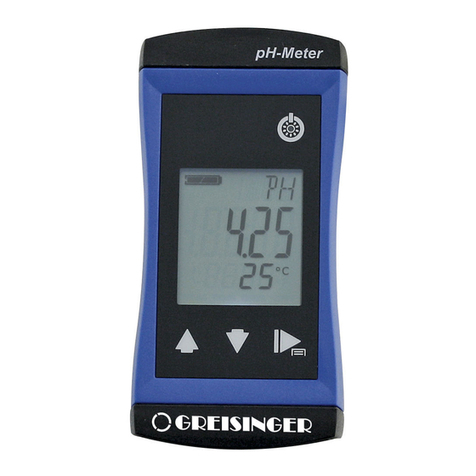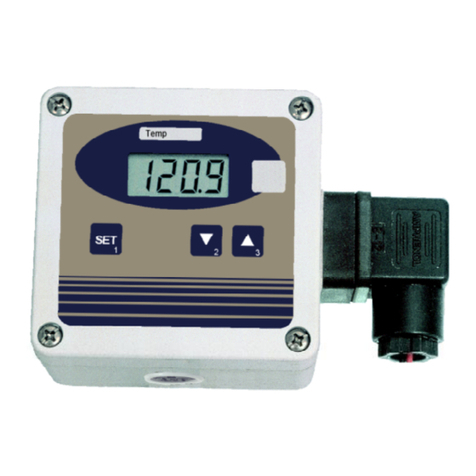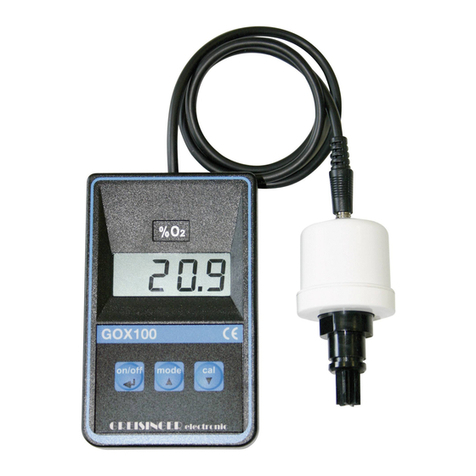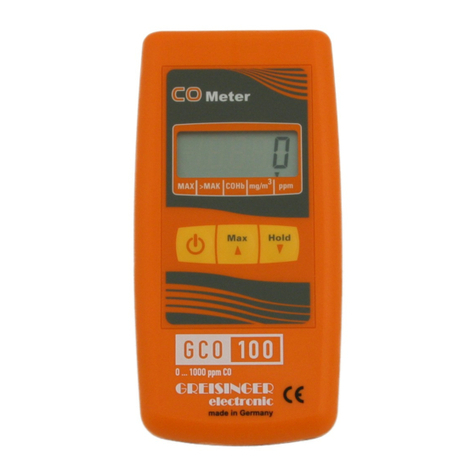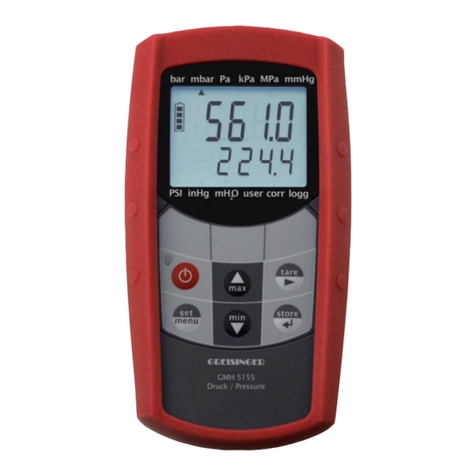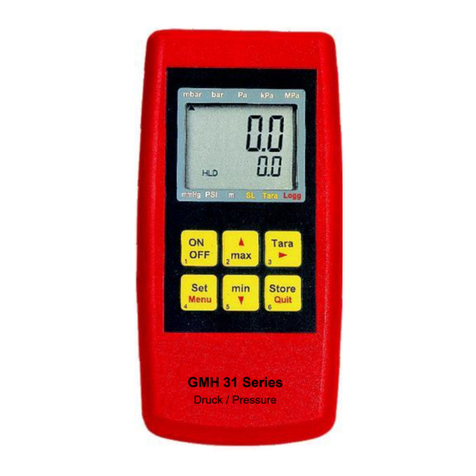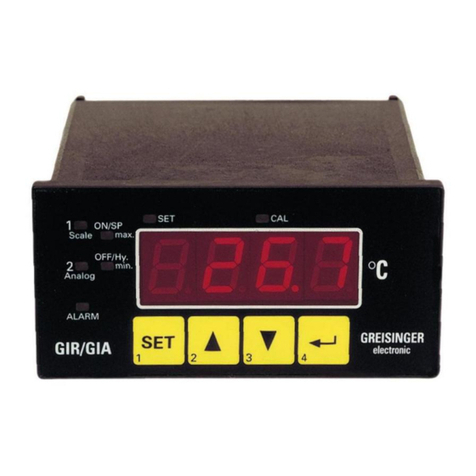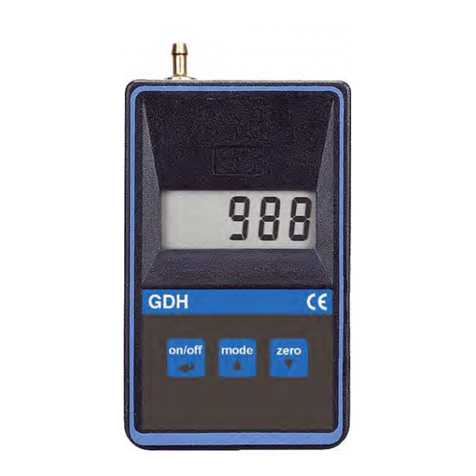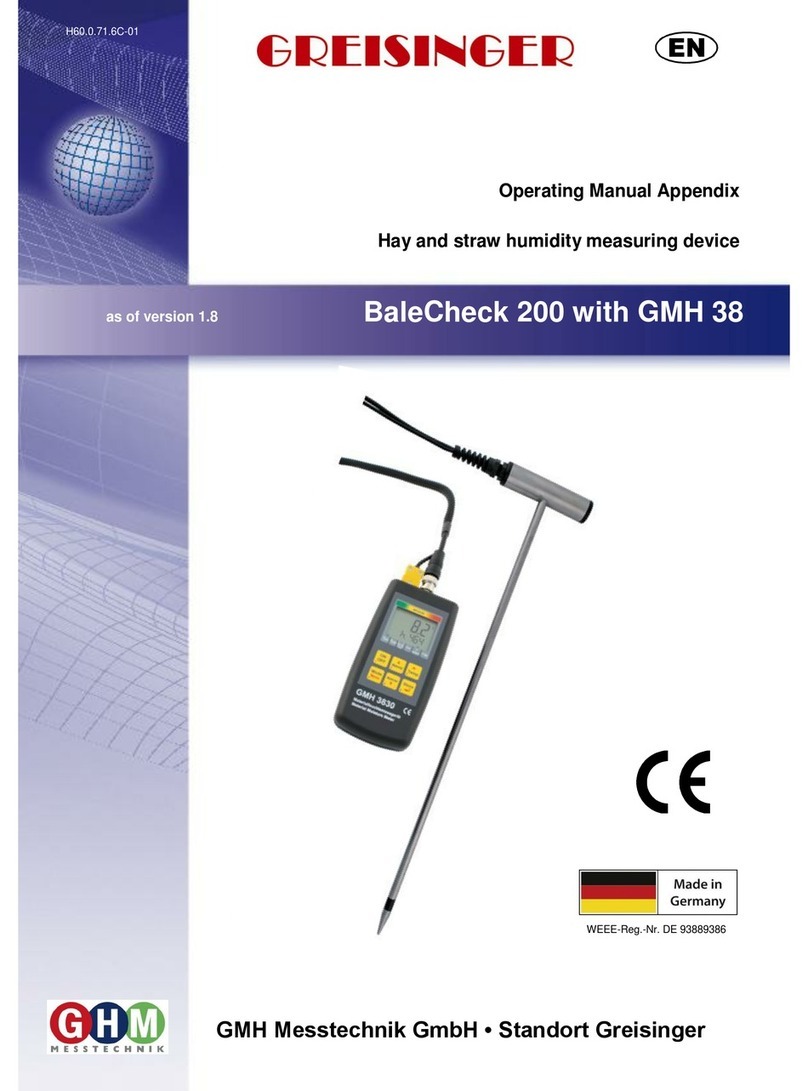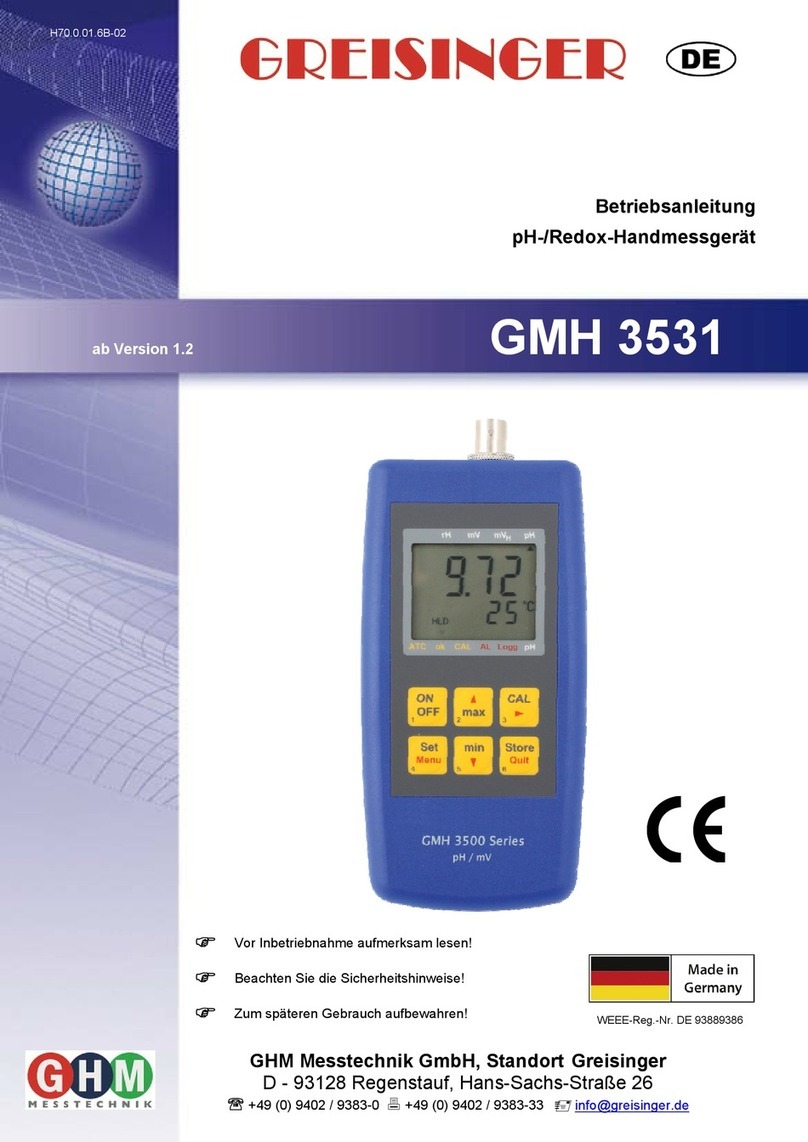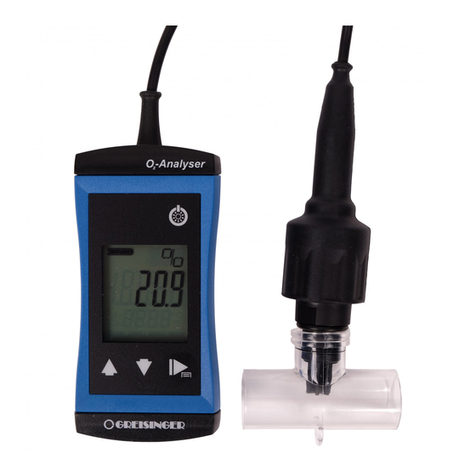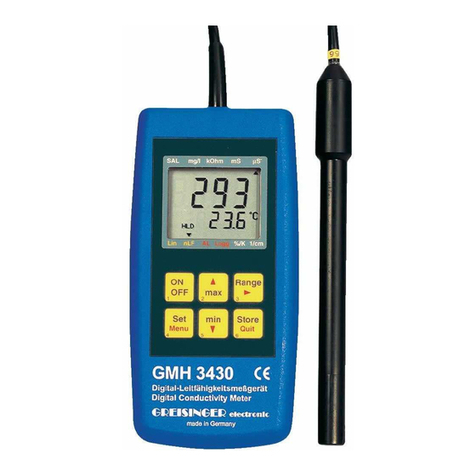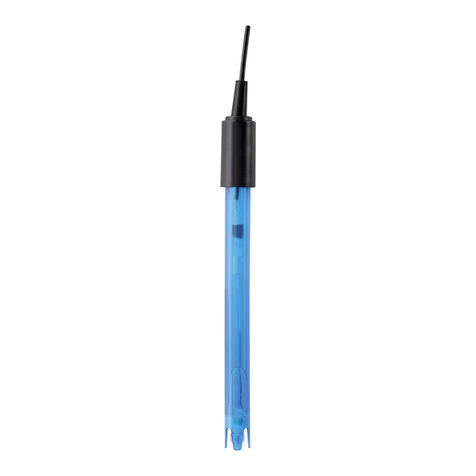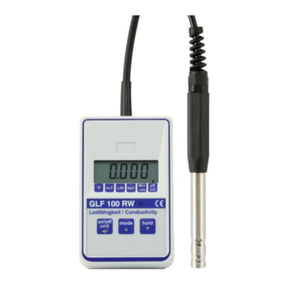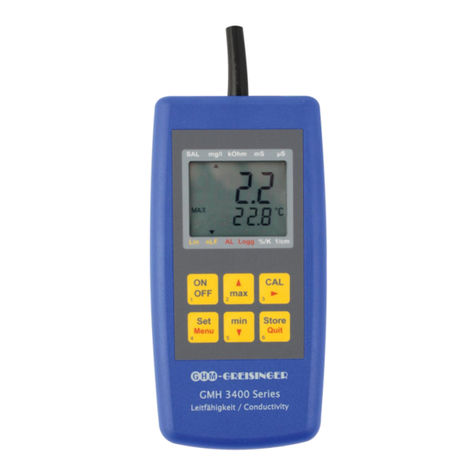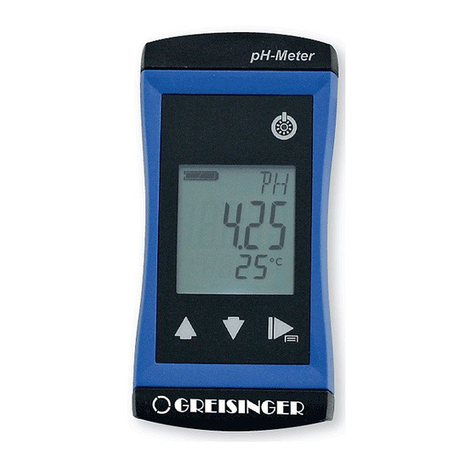
E33.0.02.6C-02 Manual for connection and operation of GIR 230 FR page 10 of 20
4.3. Measuring of rotation speed (TTL, switching-contact)
This chapter describes how to configure the device for measuring rotation speed.
This instruction demands that you selected “rPn“ as your desired input type like it is explained in chapter 4.1.
The device has to display “SEnS“.
- When pressing button 1 again, the display will show “diu“ (divisor).
- Use button 2 and 3 to select your desired divisor.
Set the divisor to the pulses per rotation the transmitter supplies.
- Press button 1 to validate your selection. The display shows “diu“ again.
- When pressing button 1 again, the display will show “dP“ (decimal point).
- Use button 2 and button 3 to select the desired decimal point position.
Use the decimal point position to change the resolution of your measurement. The more the decimal
point position is on the left, the finer the resolution will become. Please note that you lower the maximum
value that can be displayed, either
Example: your engine runs with 50 rotations per minute.
With no decimal point the device will display something like 49 – 50 – 51, the maximum value that can
be displayed is 9999 rotations per minute.
With the decimal point position on the left e.g. XX.XX the device will display something like 49.99 –
50.00 – 50.01, but the maximum value that can be displayed is 99.99 rotations per minute.
- Press button 1 to validate your selection. The display shows “dP“ again.
Now your device is adjusted to your signal source. The only thing left to do is to adjust the outputs of the
device.
- When pressing button 1 again, the display will show “outP“. (Output)
For configuring the outputs of the GIA20FR, please follow the instructions shown in chapter 4.5.
4.4. Up-/Downwards counter (TTL, switching-contact)
The upwards counter starts counting upwards from 0 according to its settings.
The downwards counter starts counting downwards from the upper value that had been selected.
Feature: The current value of the counter can be reset anytime by connecting pin 7 to GND (pin 6). The
counter starts from its beginning when disconnecting pin 6 and pin 7.
This chapter describes how to configure the device as a counter.
This instruction demands that you selected “Co.up“ or “Co.dn“ as your desired input type like it is explained
in chapter 4.1.The device has to display “SEnS“.
- When pressing button 1 again, the device will be displaying “EdGE“ (signal edge).
- Use button 2 or button 3 (middle or right button) to select the desired signal edge.
Display Signal edge Note
PoS positive The counter is triggered on the positive (ris-
ing) edge.
nEG negative The counter is triggered on the negative (fal-
ling) edge.
- Press button 1 to validate your selection, the display shows “EdGE“ again.
- When pressing button 1 again, the display will show “diu“ (divisor = pre-scaling factor).
- Use button 2 and button 3 to select the desired pre-scaling factor.
The incoming pulses will be divided with the selected pre-scaling factor, after that they will be transmitted to the de-
vice for further processing.
By this factor you can adapt the device to your transmitter or select a pre-scaling factor for large values
Example 1: Your flow rate transmitter supplies 165 pulses per litre. When setting a pre-scaling factor of 165 every
165th pulse (so 1 pulse per litre) will be used for further processing.
Example 2: Your transmitter is supplying about 5 000 000 pulses during the measurement, which exceeds the limit
of the device! But when setting a pre-scaling factor of 1000 only every 1000th pulse is used for further processing.
So you only got a value 5000 which won’t exceed the limit of the device.

